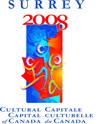In order to capture alternative views of the world I avoided photographing from eye level. Instead, I attached my camera to my ankle when shooting in Portmore Cemetery and placed my camera in a clear handbag when photographing in Antrim Castle Gardens, by attaching the camera to my ankle at Portmore, also known as Laloo, I captured images that are rich with texture, grass often in the foreground, a mid layer of rocks or gravestone and a higher level of trees and sky. An eerie self-portrait, in which the camera cannot be seen, was captured in the reflection on a gravestone.

At Antrim Castle Gardens, the camera was placed from a higher viewpoint, in a bag that was placed over my shoulder. As I walked, the camera was able to move around capturing the remains of Antrim Castle, the woods, historical monuments and gardens. The effect created by the plastic in front of the lens enhances the composition and adds texture to the image plain. The odd look of the images takes on the appearance of older photographs, and I think is quite fitting for such a place with rich histories.

NB - each sequence consists of over 20 time lapsed photos












